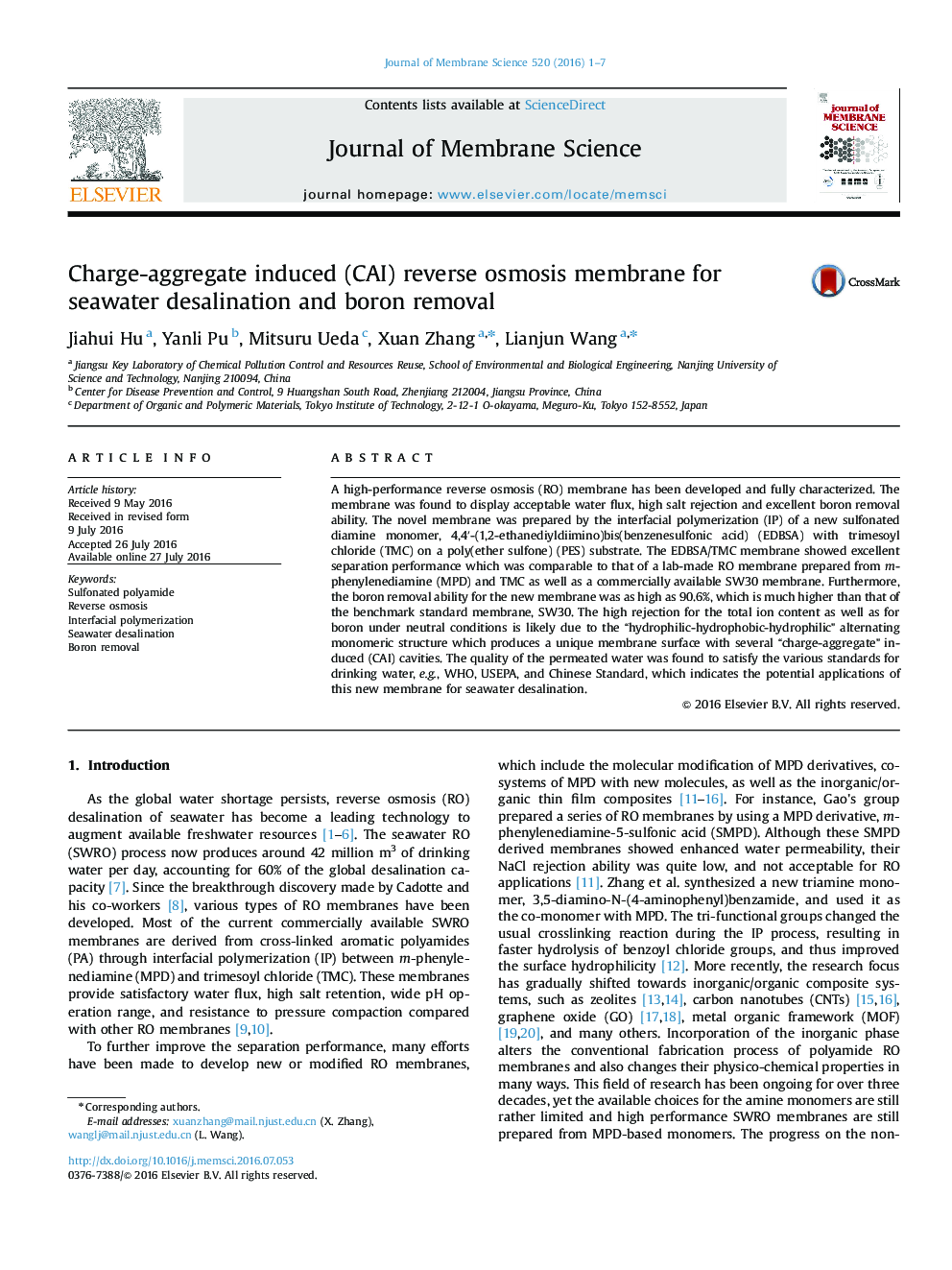| Article ID | Journal | Published Year | Pages | File Type |
|---|---|---|---|---|
| 632139 | Journal of Membrane Science | 2016 | 7 Pages |
•Sulfonated polyamide thin-film composite reverse osmosis membrane has been fabricated.•The membrane exhibited a unique surface morphology with several charge-aggregated protuberances.•The membrane showed a high boron removal rate of 90.6% under a single RO process.
A high-performance reverse osmosis (RO) membrane has been developed and fully characterized. The membrane was found to display acceptable water flux, high salt rejection and excellent boron removal ability. The novel membrane was prepared by the interfacial polymerization (IP) of a new sulfonated diamine monomer, 4,4′-(1,2-ethanediyldiimino)bis(benzenesulfonic acid) (EDBSA) with trimesoyl chloride (TMC) on a poly(ether sulfone) (PES) substrate. The EDBSA/TMC membrane showed excellent separation performance which was comparable to that of a lab-made RO membrane prepared from m-phenylenediamine (MPD) and TMC as well as a commercially available SW30 membrane. Furthermore, the boron removal ability for the new membrane was as high as 90.6%, which is much higher than that of the benchmark standard membrane, SW30. The high rejection for the total ion content as well as for boron under neutral conditions is likely due to the “hydrophilic-hydrophobic-hydrophilic” alternating monomeric structure which produces a unique membrane surface with several “charge-aggregate” induced (CAI) cavities. The quality of the permeated water was found to satisfy the various standards for drinking water, e.g., WHO, USEPA, and Chinese Standard, which indicates the potential applications of this new membrane for seawater desalination.
Graphical abstractFigure optionsDownload full-size imageDownload high-quality image (218 K)Download as PowerPoint slide
